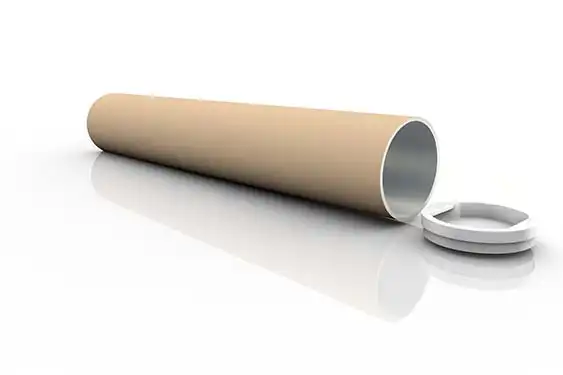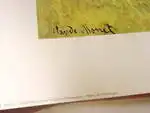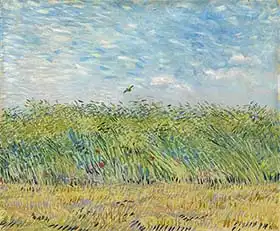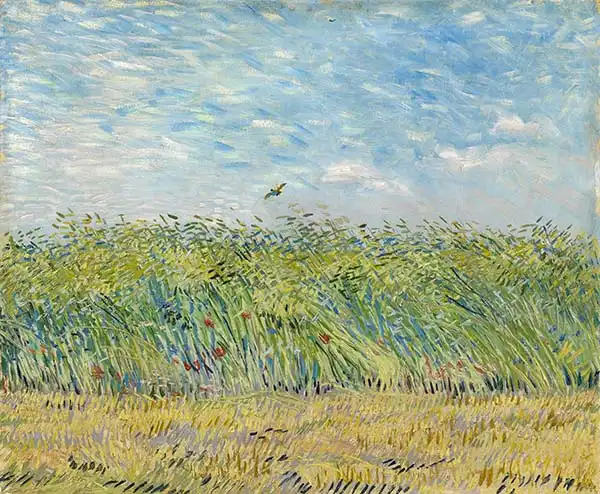About this finishing
Print. The image is printed on the top quality 10-ink HP Z9PS printer on HP matte 270 g / m2 paper. You can choose any size to an accuracy of 1 cm. A margin of 5 cm around the image is added to the size of the motif.


You can find a detailed description about our finishings
here.
Wheatfield with Partridge
Date:
1887Medium:
oil on canvasLocation:
van Gogh MuseumDimensions:
64 x 54"Field of Larks" (French: "Champ de blé aux alouettes") is an oil painting by Dutch painter
Van Gogh completed in 1887. This work is part of his
landscapes series and depicts a rural scene with a field of wheat and a flying lark. In the center of the picture is a vast field of wheat, which occupies most of the space. Wheat is depicted in different shades of green and yellow, representing different stages of growth. Van Gogh used strong brush strokes that add texture and movement to the wheat. A little lark in flight can be seen in the foreground of the painting. This detailed and dynamic element adds a sense of life and movement to the image. Here, Van Gogh captured the moment when the lark takes off from the field. The painter used visible brush strokes that are characteristic of his style. These strokes add energy and texture to the image.
Van Gogh had a penchant for symbolism in his paintings. The lark could be seen as a symbol of freedom or hope, and the wheat could symbolize the wealth and fertility of rural life.
Gogh painted picture Wheatfield with Partridge in 1887. Prevailing color of this fine art print is vivid and its shape is landscape. Original size is 64 x 54. This art piece is located in van Gogh Museum. This image is printed on demand - you can choose material, size and finishing.
Vincent Willem van Gogh (1853-1890). Dutch painter belonging to
Post-Impressionism. His paintings (some 900 paintings and 1,100 drawings and sketches) are among the most famous in the world and are sold for exorbitant sums (except for those in our shop).
Parisian Impressionists He lived in Paris from 1886 and was influenced by the use of bright colours - most of his works were painted during this period. In his paintings, Gogh uses contrasting colours (often blue and orange - he said that I want to use colours other contrasts to each of them shone even more to contrast a man and a woman). He was known for his excesses and amputated an ear after the break-up of his friendship with
Gauguin. There is a lot of speculation about this incident (he possibly suffered from heavy metal poisoning from paint that had caused mental problems). In 1890, unfortunately he committed suicide.


